DeWalt DW861W Handleiding
DeWalt
Zaagmachine
DW861W
Bekijk gratis de handleiding van DeWalt DW861W (6 pagina’s), behorend tot de categorie Zaagmachine. Deze gids werd als nuttig beoordeeld door 46 mensen en kreeg gemiddeld 3.6 sterren uit 23.5 reviews. Heb je een vraag over DeWalt DW861W of wil je andere gebruikers van dit product iets vragen? Stel een vraag
Pagina 1/6

INSTRUCTION MANUAL
GUIDE D'UTILISATION
MANUAL DE INSTRUCCIONES
INSTRUCTIVO DE OPERACIÓN, CENTROS DE SERVICIO Y PÓLIZA
DE GARANTÍA. ADVERTENCIA: LÉASE ESTE INSTRUCTIVO
ANTES DE USAR EL PRODUCTO.
IF YOU HAVE ANY QUESTIONS OR COMMENTS ABOUT THIS OR ANY DEWALT TOOL,
CALL US TOLL FREE AT: 1-800-4-DEWALT (1-800-433-9258)
General Safety Instructions
WARNING: Read and understand all instructions. Failure to follow all instruc-
tions listed below, may result in electric shock, fire and/or serious personal injury.
SAVE THESE INSTRUCTIONS
WORK AREA
•Keep your work area clean and well lit. Cluttered benches and dark areas invite accidents.
•Do not operate power tools in explosive atmospheres, such as in the presence of flam-
mable liquids, gases, or dust. Power tools create sparks which may ignite the dust or fumes.
•Keep bystanders, children, and visitors away while operating a power tool. Distractions
can cause you to lose control.
ELECTRICAL SAFETY
•Grounded tools must be plugged into an outlet properly installed and grounded in
accordance with all codes and ordinances. Never remove the grounding prong or
modify the plug in any way. Do not use any adaptor plugs. Check with a qualified elec-
trician if you are in doubt as to whether the outlet is properly grounded. If the tools
should electrically malfunction or break down, grounding provides a low resistance path to
carry electricity away from the user. Applicable only to Class I (grounded) tools.
•Double insulated tools are equipped with a polarized plug (one blade is wider than the
other.) This plug will fit in a polarized outlet only one way. If the plug does not fit fully
in the outlet, reverse the plug. If it still does not fit, contact a qualified electrician to
install a polarized outlet. Do not change the plug in any way. Double insulation elim-
inates the need for the three wire grounded power cord and grounded power supply system.
Applicable only to Class II (double insulated) tools.
•Avoid body contact with grounded surfaces such as pipes, radiators, ranges and
refrigerators. There is an increased risk of electric shock if your body is grounded.
•Don’t expose power tools to rain or wet conditions. Water entering a power tool will
increase the risk of electric shock.
•Do not abuse the cord. Never use the cord to carry the tools or pull the plug from an
outlet. Keep cord away from heat, oil, sharp edges or moving parts. Replace damaged
cords immediately. Damaged cords increase the risk of electric shock.
•When operating a power tool outside, use an outdoor extension cord marked “W-A”
or “W.” These cords are rated for outdoor use and reduce the risk of electric shock. When
using an extension cord, be sure to use one heavy enough to carry the current your product
will draw. An undersized cord will cause a drop in line voltage resulting in loss of power and
overheating. The following table shows the correct size to use depending on cord length and
nameplate ampere rating. If in doubt, use the next heavier gage. The smaller the gage num-
ber, the heavier the cord.
Minimum Gage for Cord Sets
Volts Total Length of Cord in Feet
120V 0-25 26-50 51-100 101-150
240V 0-50 51-100 101-200 201-300
Ampere Rating
More Not more AWG
Than Than
10 - 12 16 16 14 12
12 - 16 14 12 Not Recommended
PERSONAL SAFETY
•Stay alert, watch what you are doing and use common sense when operating a power
tool. Do not use tool while tired or under the influence of drugs, alcohol, or medication.
A moment of inattention while operating power tools may result in serious personal injury.
•Dress properly. Do not wear loose clothing or jewelry. Contain long hair. Keep your hair,
clothing, and gloves away from moving parts. Loose clothing, jewelry, or long hair can be
caught in moving parts. Air vents often cover moving parts and should also be avoided.
•Avoid accidental starting. Be sure switch is off before plugging in. Carrying tools with
your finger on the switch or plugging in tools that have the switch on invites accidents.
•Remove adjusting keys or wrenches before turning the tool on. A wrench or a key that
is left attached to a rotating part of the tool may result in personal injury.
•Do not overreach. Keep proper footing and balance at all times. Proper footing and bal-
ance enables better control of the tool in unexpected situations.
•Use safety equipment. Always wear eye protection. Dust mask, non-skid safety shoes,
hard hat, or hearing protection must be used for appropriate conditions.
TOOL USE AND CARE
•Use clamps or other practical way to secure and support the workpiece to a stable
platform. Holding the work by hand or against your body is unstable and may lead to loss of
control.
•Do not force tool. Use the correct tool for your application. The correct tool will do the
job better and safer at the rate for which it is designed.
•Do not use tool if switch does not turn it on or off. Any tool that cannot be controlled with
the switch is dangerous and must be repaired.
•Disconnect the plug from the power source before making any adjustments, changing
accessories, or storing the tool. Such preventative safety measures reduce the risk of
starting the tool accidentally.
•Store idle tools out of reach of children and other untrained persons. Tools are dan-
gerous in the hands of untrained users.
•Maintain tools with care. Keep cutting tools sharp and clean. Properly maintained tools,
with sharp cutting edges are less likely to bind and are easier to control.
•Check for misalignment or binding of moving parts, breakage of parts, and any other
condition that may affect the tool’s operation. If damaged, have the tool serviced
before using. Many accidents are caused by poorly maintained tools.
•Use only accessories that are recommended by the manufacturer for your model.
Accessories that may be suitable for one tool, may become hazardous when used on
another tool.
SERVICE
•Tool service must be performed only by qualified repair personnel. Service or mainte-
nance performed by unqualified personnel could result in a risk of injury.
•When servicing a tool, use only identical replacement parts. Follow instructions in the
Maintenance section of this manual. Use of unauthorized parts or failure to follow mainte-
nance instructions may create a risk of electric shock or injury.
Additional Specific Safety Instructions for Masonry Saws
•Do not reach underneath the work. The guard can not protect you from the blade below
the work.
•NEVER hold piece being cut in your hands or across your leg. It is important to support
the work properly to minimize body exposure, blade binding, or loss of control.
• Hold tool by insulated gripping surfaces when performing an operation where the cut-
ting tool may contact hidden wiring. Contact with a “live” wire will make exposed metal
parts of the tool “live” and shock the operator.
•Always use blades with correct size [(5/8" (16 mm)] and shape (round) arbor holes.
Blades that do not match the mounting hardware of the saw will run eccentrically, causing
loss of control.
•Never use damaged or incorrect blade washers or bolts. The blade washers and bolts
were specially designed for your saw, for optimum performance and safety of operation.
•Don’t unplug if plug or receptacle is wet. Disconnect the fuse or circuit breaker that sup-
plies power to the tool. Then unplug and examine for presence of water in the receptacle.
•Wait for the saw to come to a complete stop. An unprotected, coasting blade will cause the
saw to walk backwards, cutting whatever is in its path. Be aware of the time it takes for the
blade to stop after switch is released.
•Never use any blades with expansion or segmented (toothed) rims. This tool is not
equipped with a lower guard.
WARNING: Keep hands away from cutting area and blade. Personal injury may result.
WARNING: Always plug extension cord into a GFCI protected outlet.
WARNING: To reduce the risk of electrocution, keep all connections dry and off the ground.
Do not touch plug with wet hands.
WARNING: A Ground Fault Circuit Interrupter (GFCI) is provided on the cord set.
Receptacles are available having built in GFCI protection and may be used for an added mea-
sure of safety. When using an extension cord, always plug into a GFCI protected receptacle or
outlet.
WARNING: Test GFCI before each use:
1. Plug GFCI into power outlet. Indicator should turn red.
2. Press test button. Red indicator should disappear.
3. Press reset button for use. Do not use if above test fails.
WARNING: Never use saw with salt water or a conductive fluid.
WARNING: Always use eye protection. All users and bystanders must wear eye protection
that conforms to ANSI Z87.1.
CAUTION: WHEN SERVICING USE ONLY IDENTICAL REPLACEMENT PARTS. Repair or
replace damaged cords.
CAUTION: Do not connect unit to electrical power source until complete instructions are read
and understood.
CAUTION: Wear appropriate hearing protection during use. Under some conditions and
duration of use, noise from this product may contribute to hearing loss.
WARNING: Some dust created by power sanding, sawing, grinding, drilling, and other con-
struction activities contains chemicals known to the State of California to cause cancer, birth
defects, or other reproductive harm. Some examples of these chemicals are:
• lead from lead-based paints,
• crystalline silica from bricks and cement and other masonry products, and
• arsenic and chromium from chemically-treated lumber (CCA).
Your risk from these exposures varies, depending on how often you do this type of work. To
reduce your exposure to these chemicals: work in a well ventilated area, and work with approved
safety equipment, such as those dust masks that are specially designed to filter out microscopic
particles.
•Avoid prolonged contact with dust from power sanding, sawing, grinding, drilling, and
other construction activities. Wear protective clothing and wash exposed areas with
soap and water. Allowing dust to get into your mouth, eyes, or lay on the skin may promote
absorption of harmful chemicals.
WARNING: Use of this tool can generate and/or disburse dust, which may cause serious and
permanent respiratory or other injury. Always use NIOSH/OSHA approved respiratory protection
appropriate for the dust exposure. Direct particles away from face and body.
• The label on your tool may include the following symbols. The symbols and their definitions
are as follows:
V ......................volts A ........................amperes
Hz ....................hertz W ......................watts
min ..................minutes ......................alternating current
................direct current no ......................no load speed
....................Class II Construction …/min ................revolutions per minute
....................earthing terminal ......................safety alert symbol
COMPONENTS (Fig. 1)
A. GFCI on cord set K. Tapping screw
B. On/Off Switch L. Water nozzle
C. Lock-On button M. Depth adjustment lever
D. Diamond blade N. Shoe
E. External flange O. Water valve lever
F. Clamping screw P. Cutting guide
G. Water tubing Q. Bevel adjustment wing nut
H. Tool inlet R. Brush covers
I. Water tubing adapter S. Brush assembly
J. Water pressure regulator (10 psi)
DEWALT Industrial Tool Co., 701 Joppa Road, Baltimore, MD 21286
(MAR05) Form No. 626652-00 DW861W Copyright © 2005 DEWALT
The following are trademarks for one or more D WALT power tools: the yellow and black color scheme; theE
“D” shaped air intake grill; the array of pyramids on the handgrip; the kit box configuration; and the array of
lozenge-shaped humps on the surface of the tool.
DW861W Heavy-Duty 4-1/2" (114 mm) Wet/Dry Masonry Saw
DW861W scie à maçonnerie à sec/à l’eau de 114 mm (4-1/2 po) à service intensif
Sierra industrial de 114 mm (4-1/2 pulg.) de corte húmedo o seco para
mampostería DW861W
If you have questions or comments, contact us.
Pour toute question ou tout commentaire, nous contacter.
Si tiene dudas o comentarios, contáctenos.
1-800-4-DEWALT • www.dewalt.com

ASSEMBLY
Package contents:
• 1 4-1/2" (114 mm) Wet/dry masonry saw • 1 Allen wrench
• 1 Water kit • 1 Flange wrench
• Diamond blade • 1 Instruction Manual
Switch (Fig. 1, 2)
WARNING: To avoid the possibility of the appliance plug or receptacle getting wet, posi-
tion the saw to one side of a wall mounted receptacle to prevent water from dipping onto the
receptacle or plug. The user should arrange a “drip loop” in the cord connecting the saw to a
receptacle (Fig. 2). The “drip loop” is that part of the cord below the level of the receptacle, or
the connector if an extension cord is used, to prevent water traveling along the cord and com-
ing in contact with the receptacle.
CAUTION: Before plugging in tool, always check to see that the switch actuates properly and
returns to the OFF position when released.
1. Depress and hold the switch (B) to start operation.
2. For continuous operation, press the lock-on button (C) and release the switch. To disengage
the locking button, depress then release the switch.
To Install the Diamond Blade (Fig. 3)
1. Place saw on a stable surface.
2. Place blade (D) on spindle.
3. Using the flange wrench provided, hold the external flange (E)
4. Turn the clamping screw (F) counterclockwise to tighten. Use the Allen wrench provided to
secure tightly.
5. To remove the blade, reverse this procedure.
Water Valve Assembly
WARNING: Never use water valve assembly without a properly functioning pressure reg-
ulator. This could cause damage to the water tubing if excessive pressure builds up.
1. Never use the saw over head. When using water, limit cutting to the horizontal position to
reduce the risk of water entering the tool.
2. Prior to using the tool with the water valve assembly, inspect water tubing (G) for holes
cracks or other damage. Replace with identical replacement parts if a potential weakened
or damaged area is found. Check connections at the tool inlet (H), water valve and adapter
(I) for leaks. If the connection is loose or the tubing is relaxed around barbs, disconnect tub-
ing, trim tubing back approximately 1", then reconnect tubing. Ensure that tubing is pushed
all the way past the barb(s). Check to ensure tight connection.
3. When using the water kit, always use the water pressure regulator (J) provided. Firmly attach
the regulator to the water source, but do not overtighten. Be sure to use the filter washer
(inside regulator intake end) to prevent contaminates from clogging water jet ports. If regu-
lator is lost or damaged, replace with identical replacement part per the Parts Bulletin.
Mounting the Wet Cut System
WARNING: Do not use wet cut system unless tool is protected by a GFCI.
This system minimizes airborne dust particles while improving cutting quality and blade life.
1. Unclamp the depth adjustment lever (M) and pull shoe to it’s minimum depth of cut position.
2. Using a flat bladed or T20 torx screwdriver, remove the tapping screw (K) located below the
depth adjustment lever mounted to the casting.
3. Position the water valve assembly such that the hole in the water valve assembly aligns with
the screw hole located in the casting and the forked water valve (L) straddles the blade.
4. Secure in place with tapping screw. DO NOT overtighten the tapping screw; this could dam-
age the water valve assembly.
Use of Extension Cords
• Always plug extension cord into a GFCI receptacle.
• Use only extension cords that are intended for outdoor use. These extension cords are iden-
tified by a marking “Acceptable for use with outdoor appliance; store indoors while not in use.”
• Use only extension cords having an electrical rating not less than the rating of the product.
• Do not use damaged extension cords. Examine extension cord before using and replace if
damaged.
• Do not abuse extension cords and do not yank on any cord to disconnect.
Motor
Be sure your power supply agrees with the nameplate marking. Voltage decrease of more than
10% will cause loss of power and overheating. All DEWALT tools are factory tested; if this tool
does not operate, check the power supply.
• Keep cord away from heat and sharp edges.
• Always disconnect the extension cord from the receptacle before disconnecting the product
from the extension cord.
OPERATION
CAUTION: Use the appropriate blade. Do not use cracked, damaged or excessively worn
blades.
CAUTION: Wait for the blade to reach the maximum speed and use a slow even feed for
proper cutting.
CAUTION: The DW861W should only be used on horizontal surfaces (see Water Valve
Assembly above).
Depth of Cut Adjustment (Fig. 4)
1. Push the depth adjustment lever (M) down to release.
2. Move the shoe (N) up or down to desired position.
3. Pull the depth adjustment lever up to tighten.
TO ADJUST THE DEPTH ADJUSTMENT LEVER POSITION
The depth adjustment lever has been preset for better positioning. To make any adjustments,
use the following procedure:
1. Firmly tighten the depth adjustment lever.
2. Turn the screw that secures the lever in place counterclockwise to loosen completely.
Remove the lever and screw together from the nut. (The screw is spring loaded, try not to
separate these parts).
3. Set the lever to the desired position.
4. Tighten the screw turning it clockwise.
WET CUT METHOD
WARNING: Do not use wet cut system unless tool is protected by a GFCI.
WARNING: To reduce the risk of electric shock, ensure water will not enter into your tool. Do
not touch plug with wet hands.
1. Follow the instructions described under Mounting the Wet Cut System.
2. To regulate the water flow, open the water valve by pivoting the lever (O) away from the unit.
3. To close water valve, push the lever toward the unit.
3. Proceed as described below for straight or angled cuts.
STRAIGHT CUTS
1. Using a marker or grease pencil, mark the area to be cut.
2. Place the shoe of the saw on the workpiece ensuring that the blade does not touch the work-
piece.
3. Align the external part of the cutting guide (P) with the cut outline on the workpiece.
4. Turn the tool on and wait for the blade to reach its maximum velocity.
5. Move the tool slowly and evenly forward, following the cut line.
ANGLED CUTS (FIG. 5)
1. Using a marker or grease pencil, mark the area to be cut.
2. Release the bevel adjustment wing nut (Q) and move it to the desired angle.
3. After selecting the desired angle, tighten the wing nut to secure the shoe.
4. Align the internal part of the cutting guide (P) with the cut line on the workpiece.
5. Turn the tool on and wait for the blade to reach its maximum velocity.
6. Move the tool slowly and evenly forward, following the cut line.
MAINTENANCE
Brushes (Fig. 6, 7)
CAUTION: Turn off and unplug the tool before making any adjustments or removing or
installing attachments or accessories. Be sure the switch is in the OFF position.
Inspect carbon brushes regularly by unplugging tool, removing the brush covers (R) and with-
drawing the brush assemblies (S).
Keep brushes clean and sliding freely in their guides. Always replace the brush in the same ori-
entation in the holder as the used brush was prior to its removal. Carbon brushes have varying
symbols stamped into their sides, and if the brush is worn down to the line closest to the spring,
brushes must be replaced. Use only identical DEWALT brushes. Use of the correct grade of brush
is essential for proper operation. New brush assemblies are available at DEWALT service centers.
The tool should be allowed to “run in” (run at no load) for 10 minutes before use to seat new
brushes.
FIG. 1
B
C
M
N
D
G
R
E
F
I
L
FIG. 3
FIG. 4 FIG. 5
FIG. 6
FIG. 8
FIG. 7
J
M
O
O
F
E
P
Q
S
R
R
S
FIG. 2
H
A
K

CAUTION: While “running in,” DO NOT TIE, TAPE OR OTHERWISE LOCK THE SWITCH
ON. HOLD BY HAND ONLY.
Lubrication
WARNING: NEVER spray or in any other way apply lubricants or cleaning
solvents inside the tool. This can seriously affect the life and performance of
the tool and may result in personal injury.
DEWALT tools are properly lubricated at the factory and are ready for use.
However, it is recommended that, once a year, you take or send the tool to a
certified service center for a thorough cleaning and inspection.
ACCESSORIES
CAUTION: The use of any other accessory not recommended for use with this tool could be
hazardous.
Recommended accessories for use with your tool are available at extra cost from your local
dealer or authorized service center. If you need assistance in locating an authorized service
center contact: DEWALT Industrial Tool Co., 701 East Joppa Road, Baltimore, MD 21286 or call
1-800-4-DEWALT (1-800-433-9258).
Repairs
To assure product SAFETY and RELIABILITY, repairs, maintenance and adjustment (including
brush inspection and replacement) should be performed by authorized service centers or other
qualified service personnel, always using identical replacement parts.
Three Year Limited Warranty
DEWALT will repair, without charge, any defects due to faulty materials or workmanship for three
years from the date of purchase. This warranty does not cover part failure due to normal wear
or tool abuse. For further detail of warranty coverage and warranty repair information, visit
www.dewalt.com or call 1-800-4-DEWALT (1-800-433-9258). This warranty does not apply to
accessories or damage caused where repairs have been made or attempted by others. This
warranty gives you specific legal rights and you may have other rights which vary in certain
states or provinces.
In addition to the warranty, DEWALT tools are covered by our:
1 YEAR FREE SERVICE
DEWALT will maintain the tool and replace worn parts caused by normal use, for free, any time
during the first year after purchase.
90 DAY MONEY BACK GUARANTEE
If you are not completely satisfied with the performance of your DEWALT Power Tool, Laser, or
Nailer for any reason, you can return it within 90 days from the date of purchase with a receipt
for a full refund – no questions asked.
RECONDITIONED PRODUCT: Reconditioned product is covered under the 1 Year Free
Service Warranty. The 90 Day Money Back Guarantee and the Three Year Limited Warranty do
not apply to reconditioned product.
FREE WARNING LABEL REPLACEMENT: If your warning labels (Fig. 8) become illegible or
are missing, call 1-800-4-DEWALT for a free replacement.
et les gants éloignés des pièces mobiles, car ceux-ci peuvent s’y coincer. Se tenir éloigné
des évents puisque ces derniers pourraient camoufler des pièces mobiles.
•Éviter les démarrages accidentels; s’assurer que l’interrupteur est en position d’arrêt
avant de brancher l’outil. Ne pas transporter l’outil en laissant le doigt sur l’interrupteur ni le
brancher lorsque l’interrupteur est en position de marche, car cela pourrait causer un accident.
•Retirer les clés de réglage avant de démarrer l’outil. Une clé laissée sur une pièce rota-
tive pourrait entraîner des blessures.
•Ne pas trop étendre les bras. Les pieds doivent rester ancrés fermement au sol afin de
maintenir son équilibre en tout temps et de mieux maîtriser l’outil dans des situations
imprévues.
•Utiliser le matériel de sécurité approprié; toujours porter des lunettes de protection.
Porter un masque anti-poussières, des chaussures antidérapantes, un casque de sécurité ou
des protecteurs auditifs lorsque la situation le requiert.
UTILISATION ET ENTRETIEN DE L’OUTIL
•Fixer et soutenir la pièce sur une plate-forme stable au moyen d’une bride de serrage
ou de tout autre dispositif semblable. La pièce est instable lorsqu’on la retient manuelle-
ment ou qu’on l’appuie contre le corps, ce qui pourrait faire perdre la maîtrise de l’outil.
•Ne pas forcer l’outil ni l’utiliser pour des travaux autres que ceux pour lesquels il a été
conçu. Pour obtenir de meilleurs résultats et prévenir les risques de blessure, laisser l’outil
couper à la vitesse pour laquelle il a été conçu.
•Ne pas utiliser l’outil lorsque l’interrupteur marche-arrêt ne fonctionne pas. Tout outil
qui ne peut être commandé au moyen de l’interrupteur est dangereux et doit être réparé.
•Débrancher l’outil de la source d’alimentation électrique avant d’effectuer un réglage,
de changer les accessoires ou de ranger l’outil; ces mesures de sécurité préventives
réduisent les risques de démarrage accidentel.
•Lorsqu’on n’utilise pas l’outil, le ranger hors de la portée des enfants ou des
personnes non qualifiées. Les outils sont dangereux entre les mains de personnes inex-
périmentées.
•Bien entretenir l’outil; s’assurer qu’il est toujours bien propre et aiguisé. Les outils bien
entretenus et dont les bords sont bien tranchants sont moins susceptibles de rester coincés
et sont plus faciles à maîtriser.
•Vérifier les pièces mobiles afin de s’assurer qu’elles sont bien alignées et qu’elles ne
restent pas coincées. Vérifier également les pièces afin de s’assurer qu’il n’y a aucun
bris ni aucune autre condition susceptible de nuire au bon fonctionnement de l’outil.
Faire réparer l’outil si ce dernier est endommagé avant de s’en servir à nouveau, car
les accidents sont souvent causés par des outils mal entretenus.
•N’utiliser que les accessoires recommandés par le fabricant pour le modèle concerné.
Un accessoire destiné à un outil particulier peut devenir dangereux lorsqu’il est utilisé avec
un autre.
ENTRETIEN
•L’outil doit être entretenu par le personnel qualifié seulement; toute maintenance effec-
tuée par une personne non qualifiée pourrait entraîner des risques de blessure.
•Lors de l’entretien, n’utiliser que des pièces de rechange identiques et suivre les
directives précisées à la section « Entretien » du présent guide afin de prévenir les
risques de choc électrique ou de blessure.
Instructions additionnelles de sécurité spécifiques aux
scies à maçonnerie
•NE JAMAIS maintenir la pièce à découper à l’aide des mains ou des jambes. Il est
important de maintenir le projet correctement pour minimiser tout danger corporel, pincement
de lame ou perte de contrôle de l’outil.
• Tenir l’outil par les surfaces isolées prévues à cette fin lorsqu’il risque d’entrer en con-
tact avec des fils cachés, car de tels contacts peuvent mettre les pièces métalliques de
l’outil sous tension, engendrant des risques de choc électrique.
•Toujours utiliser des lames de taille adéquate (16 mm ou 5/8 po) avec un alésage
central façonné (arrondi). Toute lame non conçue pour la ferrure de fixation de la scie
fonctionnera de manière excentrique et provoquera la perte de contrôle de l’outil.
•Ne jamais utiliser de rondelles ou boulons de lame endommagés ou inadéquats. Les
rondelles et boulons de lame ont été spécialement conçus pour cette scie, pour optimiser ses
performances et sa sécurité d’emploi.
•Ne pas débrancher l’outil si sa fiche ou la prise est humide. Déconnecter le fusible ou le
disjoncteur alimentant l’outil en courant. Débrancher ensuite l’appareil puis vérifier toute
présence de liquide au niveau de la prise.
•Attendre l’arrêt complet de la scie. Une lame non protégée en roue libre provoquera la
marche arrière de la scie qui coupera tout ce qui se trouvera sur son passage. Tenir compte
du temps nécessaire à la lame pour s’arrêter complètement une fois l’interrupteur relâché.
•Ne jamais utiliser de lames extensibles ou à couronne segmentée (dentée). C’est outil
n’est pas équipé d’un dispositif de protection inférieur.
AVERTISSEMENT : Éloigner les mains des zones et organes de coupe pour prévenir
tout risque de blessure.
AVERTISSEMENT : Toujours brancher la rallonge dans une prise homologuée GFCI.
AVERTISSEMENT : Afin de réduire les risques d’électrocution, s’assurer que tous les rac-
cords sont secs et surélevés par rapport au sol. Ne pas toucher à la fiche avec les mains
humides.
AVERTISSEMENT : Un disjoncteur de fuites à la terre (GFCI) est intégré au cordon d’ali-
mentation. Pour un supplément de sécurité, des prises avec GFCI intégré sont vendues dans
les magasins spécialisés. En cas d’utilisation d’une rallonge, toujours la brancher dans une prise
ou sortie munie d’un GFCI.
AVERTISSEMENT : Effectuer un essai du disjoncteur de fuite de terre avant toute utili-
sation :
1. enficher le disjoncteur dans la prise de courant pour allumer le voyant rouge;
2. enfoncer le poussoir d’essai pour éteindre le voyant rouge;
3. enfoncer le bouton de réenclenchement avant d’utiliser l’outil; ne pas l’utiliser si l’essai a
échoué.
AVERTISSEMENT : Ne jamais utiliser la scie avec de l’eau salée ou un fluide conducteur.
AVERTISSEMENT : Toujours porter des lunettes de protection. Tout utilisateur ou per-
sonne présente doit porter des lunettes de protection homologuées ANSI Z87.1.
MISE EN GARDE : LORS DE L’ENTRETIEN, N’UTILISER QUE DES PIÈCES DE
RECHANGE IDENTIQUES. Faire réparer ou remplacer les cordons endommagés.
MISE EN GARDE : Lire et comprendre toutes les directives du présent manuel avant de rac-
corder l’outil à une source d’alimentation électrique.
MISE EN GARDE : Porter un appareil de protection personnel anti-bruit approprié
durant l’utilisation. Sous certaines conditions et pendant toute la durée de l’utilisation, le bruit
émanant de ce produit pourrait contribuer à la perte d’audition.
AVERTISSEMENT : Certains outils électriques, tels que les sableuses, les scies, les meules,
les perceuses ou certains autres outils de construction, peuvent produire de la poussière con-
tenant des produits chimiques susceptibles d’entraîner le cancer, des malformations congéni-
tales ou pouvant être nocifs pour le système reproductif. Parmi ces produits chimiques, on
retrouve :
• le plomb dans les peintures à base de plomb,
• la silice cristalline dans les briques et le ciment et autres produits de maçonnerie,
• l’arsenic et le chrome dans le bois de sciage ayant subi un traitement chimique (comme
l’arséniate de cuivre et de chrome).
Le risque associé à de telles expositions varie selon la fréquence avec laquelle on effectue ces
travaux. Pour réduire l’exposition à de tels produits, il faut travailler dans un endroit bien aéré et
utiliser le matériel de sécurité approprié, tel un masque anti-poussières spécialement conçu
pour filtrer les particules microscopiques.
•Éviter tout contact prolongé avec la poussière soulevée par cet outil ou autres outils
électriques. Porter des vêtements de protection et nettoyer les parties exposées du
corps à l’eau savonneuse. S’assurer de bien se protéger afin d’éviter d’absorber par la
bouche, les yeux ou la peau des produits chimiques nocifs.
AVERTISSEMENT : Cet outil peut produire et répandre de la poussière susceptible de
causer des dommages sérieux et permanents au système respiratoire. Toujours utiliser un
appareil respiratoire anti-poussières approprié approuvé par le NIOSH ou l’OSHA. Diriger les
particules dans le sens opposé du visage et du corps.
SI VOUS AVEZ DES QUESTIONS OU VOUS VOULEZ NOUS FAIRE PART DE VOS
COMMENTAIRES CONCERNANT CET OUTIL OU TOUT AUTRE OUTIL DEWALT,
COMPOSEZ SANS FRAIS LE : 1 800 433-9258. (1-800-4-DEWALT).
Règles de sécurité – Généralités
AVERTISSEMENT : Il faut lire et comprendre toutes les directives. Le non-
respect des directives présentées ci-dessous pourrait causer un choc électrique,
un incendie et/ou des blessures graves.
CONSERVER CES DIRECTIVES
AIRE DE TRAVAIL
•L’aire de travail doit être propre et bien éclairée. Les établis encombrés et les endroits
sombres peuvent entraîner des accidents.
•Ne pas faire fonctionner des outils électriques dans des atmosphères explosives,
comme en présence de liquides, de gaz et de poussières inflammables. Les outils élec-
triques produisent des étincelles qui peuvent enflammer la poussière ou les vapeurs
•Tenir les enfants, les visiteurs ou toute autre personne à l’écart lorsqu’on utilise un
outil électrique; les distractions peuvent faire perdre la maîtrise de ce dernier.
MESURES DE SÉCURITÉ – ÉLECTRICITÉ
•Les outils mis à la terre doivent être branchés dans une prise correctement installée et
mise à la terre tel que l’indiquent les codes et règlements en vigueur. Ne jamais retirer
la broche de mise à la terre ou modifier la prise en aucune façon. Ne pas utiliser de fiche
d’adaptation. Consulter un électricien qualifié s’il y a un doute en ce qui concerne la
mise à la terre de la prise. En cas de défaillance électrique ou de bris de l’outil, la mise à la
terre procure un chemin de faible résistance au courant afin de réduire les risques de choc
électrique. Cette protection ne s’applique qu’aux outils de classe I (mis à la terre).
•Les outils à double isolation sont munis d’une fiche polarisée (c’est-à-dire que l’une
des lames est plus large que l’autre), laquelle ne peut être raccordée qu’à une prise
polarisée et ce, dans un seul sens; on doit l’inverser si on est incapable de l’enfoncer
complètement. Si la fiche ne s’adapte toujours pas, on doit faire appel à un électricien
qualifié pour qu’il installe la prise appropriée. On ne doit jamais modifier la fiche. La
double isolation élimine le besoin d’installer un cordon d’alimentation trifilaire et un sys-
tème d’alimentation électrique pourvus d’une mise à la terre; seuls les outils de classe II (à
double isolation) sont munis d’une telle protection.
•Éviter tout contact entre le corps et les éléments mis à la terre, comme les tuyaux,
les radiateurs, les cuisinières et les réfrigérateurs, afin de réduire les risques de choc
électrique.
•Ne pas utiliser l’outil électrique dans des endroits mouillés, ni l’exposer à la pluie; l’in-
filtration d’eau à l’intérieur de l’outil augmente les risques de choc électrique.
•Ne pas utiliser le cordon de manière abusive; on ne doit pas transporter l’outil en le
tenant par le cordon, ou utiliser ce dernier pour le débrancher. On doit tenir le cordon
à l’écart des sources de chaleur, de l’huile, des bords tranchants ou des pièces
mobiles. Remplacer immédiatement les cordons endommagés, car ces derniers aug-
mentent les risques de choc électrique.
•Lorsqu’on utilise un outil électrique à l’extérieur, on ne doit utiliser que des rallonges
conçues pour cet usage, comme celles de type « W-A » ou « W », afin de réduire les
risques de choc électrique. S’assurer que la rallonge est en mesure de porter le courant
nécessaire à l’outil. Une rallonge de calibre inférieur entraînera une chute de tension se
traduisant par une perte de puissance et une surchauffe. Le tableau ci-dessous illustre les
calibres que l’on doit utiliser selon la longueur de la rallonge et l’intensité nominale indiquée
sur la plaque signalétique. En cas de doute, utiliser le calibre suivant. Plus le calibre est petit,
plus la rallonge peut porter de courant.
Calibre minimal des cordons de rallonge
TensionLongueur totale du cordon en meters
120 V De 0 à 7 De 7 à 15 De 15 à 30 De 30 à 45
240 V De 0 à 7 De 7 à 15 De 15 à 39 De 30 à 45
Intensité (A)
Au Au Calibre moyen de fil
moins plus
10 - 12 16 16 14 12
12 - 16 14 12 Non recommandé
SÉCURITÉ PERSONNELLE
•Rester vigilant en tout temps et faire preuve de jugement lorsqu’on utilise un outil
électrique. Ne pas utiliser l’outil lorsqu’on est fatigué ou sous l’influence de drogues,
d’alcool ou de médicaments, car un moment d’inattention pourrait entraîner des blessures
graves.
•Porter des vêtements appropriés. Ne pas porter des vêtements amples ou des bijoux.
Couvrir ou attacher les cheveux longs. Garder les cheveux, les vêtements, les bijoux
Product specificaties
| Merk: | DeWalt |
| Categorie: | Zaagmachine |
| Model: | DW861W |
Heb je hulp nodig?
Als je hulp nodig hebt met DeWalt DW861W stel dan hieronder een vraag en andere gebruikers zullen je antwoorden
Handleiding Zaagmachine DeWalt
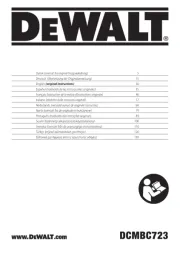
4 Juli 2025

11 Februari 2025

2 Januari 2025

2 Januari 2025

2 Januari 2025

22 November 2024

11 September 2024

15 Juli 2024

15 Juli 2024

15 Juli 2024
Handleiding Zaagmachine
- Bavaria
- Lionelo
- Bebe Confort
- Sthor
- Truper
- Troy-Bilt
- Echo
- Florabest
- Hecht
- Rikon
- Bestgreen
- Stihl
- MSW
- Daewoo
- McKenzie
Nieuwste handleidingen voor Zaagmachine
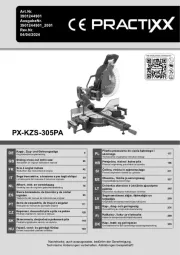
30 Juli 2025
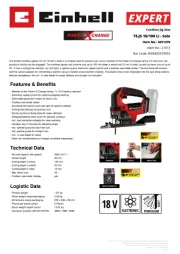
29 Juli 2025
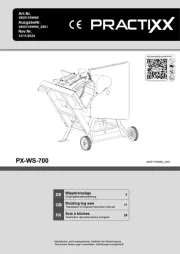
29 Juli 2025
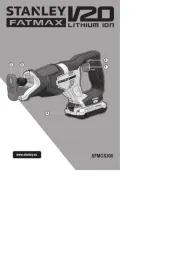
29 Juli 2025
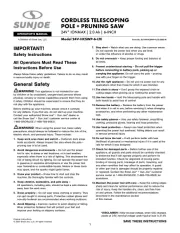
29 Juli 2025
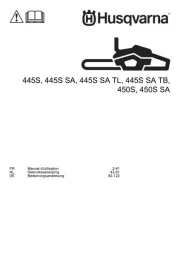
28 Juli 2025

23 Juli 2025
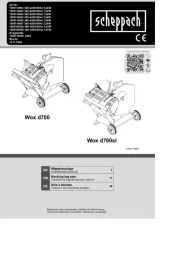
21 Juli 2025
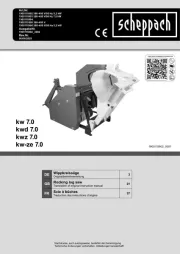
21 Juli 2025
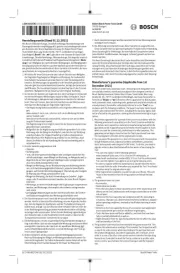
20 Juli 2025